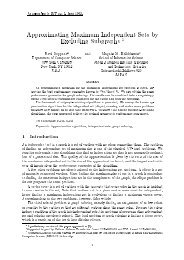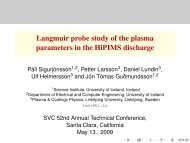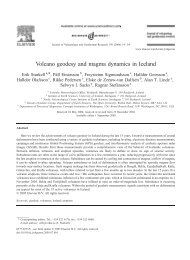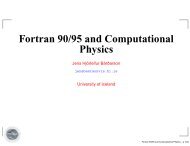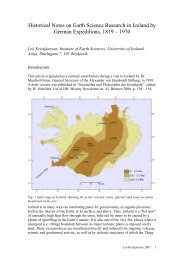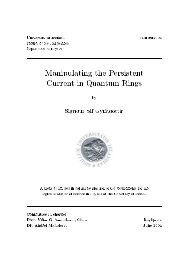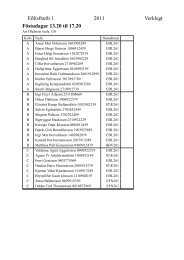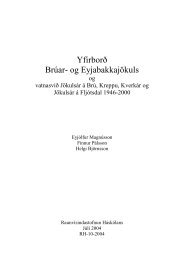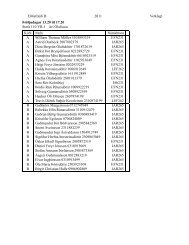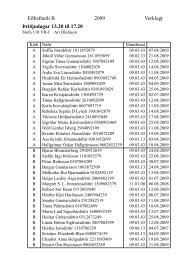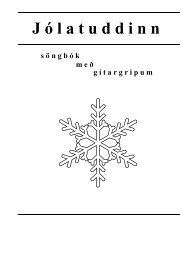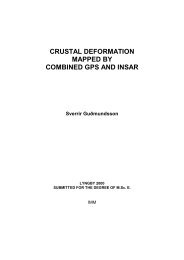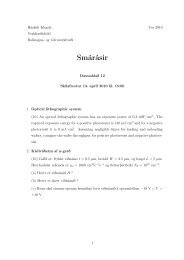You also want an ePaper? Increase the reach of your titles
YUMPU automatically turns print PDFs into web optimized ePapers that Google loves.
1D <strong>Ising</strong> <strong>model</strong>Normal mode dispersion1J(q)=βJ1( ) ≈ 1 ) (1 + a21 − (qa)22+ ... βJ 2 q2 + h.o.t.Remember that F −1 (q 2 ) = − d2dx 2Exp<strong>and</strong>ing the ln(cosh(φ)) = 1 2 φ2 − 1 12 φ4Z= N ∏ m∫≡∫ dψm√2πe β R dx( 1 2 ψ(x)(∇2 ψ(x))−˜r 0 ψ 2 (x)−ũ 0 ψ 4 (x))Dψe −β R “dx 12 (∇ψ(x))2 +˜r 02 ψ 2 (x)+ ũ04 ψ (x)”4All constants a,J,β,... are absorbed in ψ,˜r 0 ,ũ 0Solving this beast :Stationary phase approximationIn field theory called saddle point approx.



